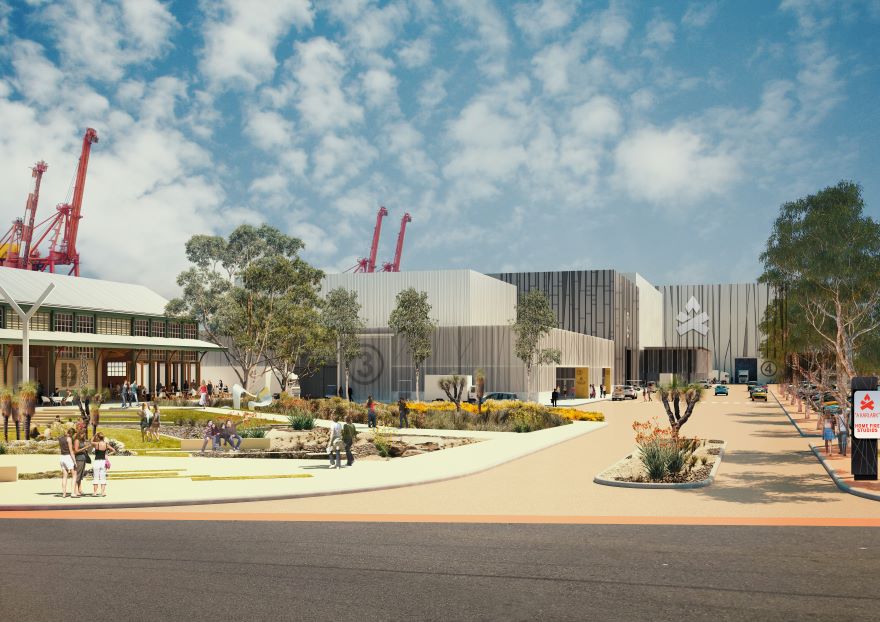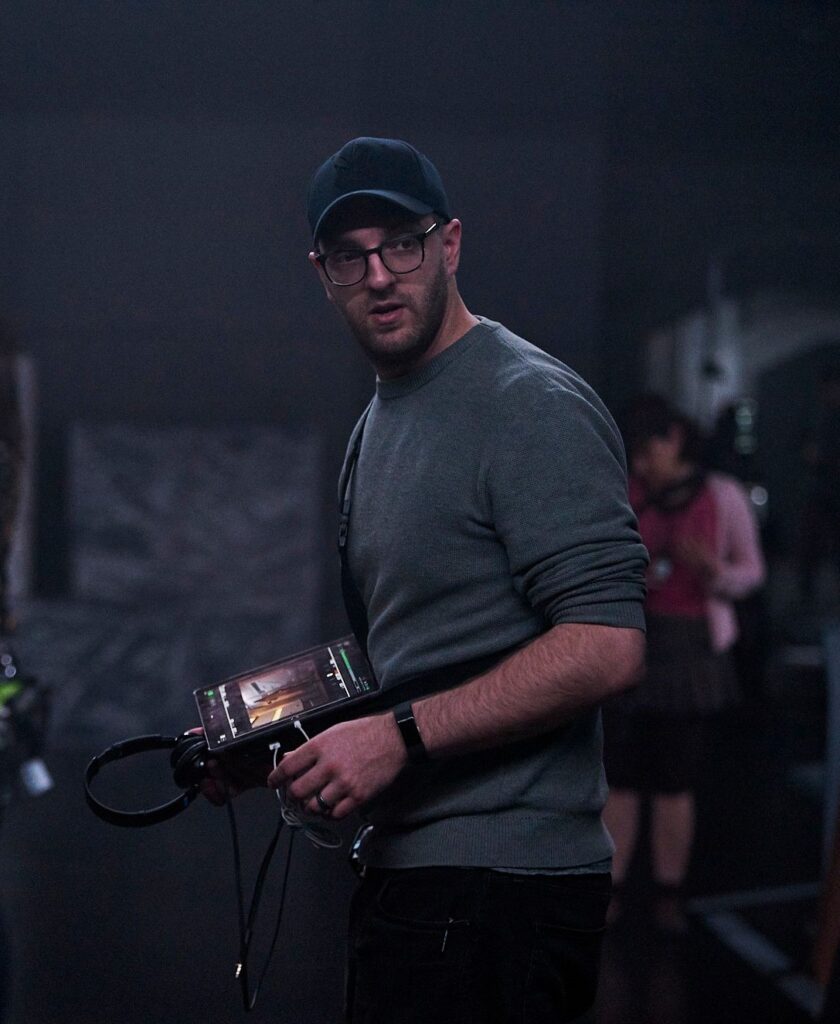Western Australia is building a film studio to cash in on Hollywood’s rush Down Under. But what will the arrival of big-budget productions mean for the local industry, asks Mark Naglazas in the final in his three-part series on the most significant piece of filmmaking infrastructure in the state’s history.
What has Marvel ever done for us?
20 May 2021
- Reading time • 10 minutesFilm
More like this
- The great unknown
- Darkness lights the way
- Shining a beacon of light on our history
When acclaimed Perth production designer Emma Fletcher signed on for The Heights she knew it would be the biggest challenge of her career. Fletcher would have to conjure an entire inner-city universe inside the Perth ABC Studios, a space scaled to the needs of political debates and election night coverage, not a sprawling, multi-character in the mould of Neighbours or Home and Away.
Using an ingenious system of flats that could be flipped-over and repurposed, Fletcher and her team set about their world-building, creating several apartments, a terrace house, a townhouse, a warehouse apartment, a corner store and a medical centre. By the time I paid a visit Fletcher’s set had grown into a labyrinth so intricate I had to ring the publicist to rescue me.
While Fletcher made the space work the real problems were behind-the-scenes. “All the sets were built in a warehouse in Belmont and brought to the ABC in trucks which had no proper place to unload. And there was no parking for the crew so we had to negotiate with TAFE across the road to get spaces,” says Fletcher during a break from her current job, Rene Webster’s debut How To Please A Woman.
Fletcher’s Herculean task on The Heights is typical of what the West Australian film industry faces on almost every project. It is a constant battle to secure adequate production offices, well-equipped workshops, decent storage space, places to park cars, trucks and so forth, the array of facilities and services that allow reality to be put aside so directors and actors can make magic happen.
These essential facilities are part of the vision of Home Fire Creative Industries, whose winning proposal for a studio on Victoria Quay is currently being evaluated by the McGowan Labor government and various stakeholders, including the Fremantle Port Authority. However, when the Marvel-sized blockbusters needed to make the studio work roll into town, home-grown productions will be forced to step aside and make do with the inadequate amenities.

“Everyone is excited by the prospect of a studio but I don’t think it will directly benefit those making movies in the two to twenty million range,” says Fletcher, who is the president of Professional Film Crew of Western Australian, an association covering what the industry calls below-the-line workers.
“There will be a cross-over between the big productions that come into town and the local industry. But to make sure we’re not simply servicing overseas productions we need to incubate writers and directors and producers who are telling our stories. And we need to make sure the facilities we will continue to use are maintained and improved.”
Raising the game
Fremantle-based producer Ryan Hodgson (Blame, I Met a Girl, Laura’s Choice) agrees with Fletcher that we cannot stake everything on the new studio. “It wouldn’t take much out of the announced $100 million budget for the studio to improve what we already have, such as the ABC and Sunset Hospital. We don’t want all our eggs in one basket,” argues Hodgson.
While Hodgson says there’s nothing on the current slate of the company he runs with his wife Melissa Kelly that would need to be made in a studio he’s thrilled by the prospect of a world-class filmmaking facility in Fremantle because it will enable the overall industry to grow and help WA retain crews.
“There has been a lot of activity in recent years but for some reason everything seems to happen at the same time,” explains Hodgson. “This sizeable gap between productions means that crew members who don’t have family ties tend to move to Sydney or Melbourne where they can get greater continuity of work. A studio will provide the continuity of work that will help retain talent.
“If there is more crew in Perth and that crew is better skilled and able to work across an array of production types the next time Melissa and I finance a project we will have a deeper pool of talent to draw upon.”
What if the studio becomes so busy that crews are no longer able to work on local productions? I ask Hodgson. “That happens here right now,” he counters. “Our talent pool is not deep. It is not uncommon to be shuffling your start and finish dates around to get the people you want. So the key is growing the talent base so we can service both the bigger imported productions and local industry.”
Aidan O’Bryan, producer of the recent box-office hit Rams, is another who can’t see himself working in the proposed Victoria Quay facility in the immediate future. However, O’Bryan believes that the boost in the overall level of production that will come with a studio will enable crews to enjoy the full-blown careers denied them by the stop-start nature of the local industry, which in turn will be good for the entire screen community.
The new studio will be a game-changer for the entire industry.
Film producer Aidan O’Bryan
“A movie studio and the work that will be generated by such a facility will allow technical crews to make movies and television their primary focus,” argues O’Bryan. “Many of the best people in Perth are only able to practice their craft intermittently. More consistent work and bigger productions will allow them to do it full-time and, in turn, get better at what they do. This will be good for the entire industry.
“It’s a huge difference to be working in a filmmaking environment when people believe there’s a pathway to a full-fledged career or they have enough faith in the industry to buy equipment and build a business. How much better will you be at your craft when you only have one job or if you have equipment being rented out at the rates that make it economically viable and allow you to buy more and better gear? The new studio will be a game-changer for the entire industry.”
However, O’Bryan, like Fletcher, believes that if we are to grow the local industry and take advantage of this historic investment by the state government we will need to look beyond infrastructure.
“Great movies and successful television series will not naturally flow from a development like this. We need to also invest in content and creativity. My rule-of-thumb is that every dollar you spend on infrastructure should be matched by a dollar spent on incentives and education.”
Build it and they will stay
For Bayswater-based writer-director Grant Sputore the new studio cannot come quickly enough. After the success of his first feature, the futuristic thriller I Am Mother, Sputore relocated to Los Angeles and set about preparing a number of film and television projects that would all require the facilities offered by a major movie-making centre.
When COVID-19 hit Sputore and his wife rushed back home so they would not be trapped in the US and be unable to travel back to Perth to see their family. Sputore has no plans to return to Los Angles and is throwing his support behind the proposed Victoria Quay facility.

While COVID-19 cut short Sputore’s long dreamed-about residence in the city that has fuelled his cinematic dreams since childhood it has, ironically, allowed him to continue his international filmmaking career from his hometown. He calls it a “weird silver lining” of the pandemic.
“Since COVID the world has become used to taking meetings via Zoom. Before COVID you were expected to jump on a plane and fly to Los Angeles to take a meeting with a producer. Now it is completely acceptable to do it over Zoom. The movie industry has gotten used to people working around the world. Even Hollywood executives are now dialling in from Colorado or Texas or Hawaii,” says Sputore.
While most of Sputore’s colleagues in the WA film and television industry will continue in the naturalistic style for which we’re known, setting films in regional areas and showing off the landscape (Albany in H is for Happiness, Mt Barker in Rams, the Kimberley in Dirt Music), the ambitions of the one-time commercials maestro is science fiction and fantasy, which is why he is thrilled at the prospect of a movie studio.
Sputore’s debut feature I Am Mother was backed by ScreenWest and lined up to be shot in Western Australia (Emma Fletcher did the initial production design work). However, Sputore and his team could not make it work at the ABC and ultimately had to shoot in a studio in Adelaide (where Mortal Kombat was filmed).
“If the proposed studio existed back then I Am Mother would have been made here,” he says. “Before I made I Am Mother I spent ten years making television commercials in Perth and had relationships with almost every crew member in the state. It’s not a bad thing going into your first feature being surrounded by familiar faces. So when I shot in Adelaide the only people I knew were my producer and one of my VFX supervisors.”
While the soundstages of the kind proposed for Fremantle will be mostly used by big-budget fantasies in the mould of Marvel’s Thor, which is currently in production at Fox Studios in Sydney, it will also allow filmmakers to move beyond the naturalistic style that dominates Australian cinema. In other words, it gives writers, director and producers more freedom when conjuring their stories and opens the way for innovative filmmaking.
“It is not that one form of filmmaking is better than the other. It is just that we already have beautiful locations. A studio will allow filmmakers to unleash their imaginations and work across different genres. They might not get into the studio at the start but the day will come when a local filmmaker will make use of what will be an incredible tool.”
Sputore also believes a studio’s importance is beyond the physical space and the technology housed inside. “It will announce to the world that we are serious about the film industry. Not every production needs to be shot inside the studio. But the fact that it is here will give producers from around the world confidence that we are at their level and can deliver.”
READ MORE: In part one of the Fremantle Film Studio series “Hollywood or Bust?” Mark Naglazas asks if a $100 million state-of-the-art facility on Victoria Quay is what our screen industry really needs? Part two “Lights, Cameras, Fremantle!” explores if a filmmaking facility in the middle of a working port and a tourist centre is the best choice?
Pictured top: Emma Fletcher on the supermarket set she designed as part of “The Heights”. Photo: Ashleigh Nicolau
Like what you're reading? Support Seesaw.






